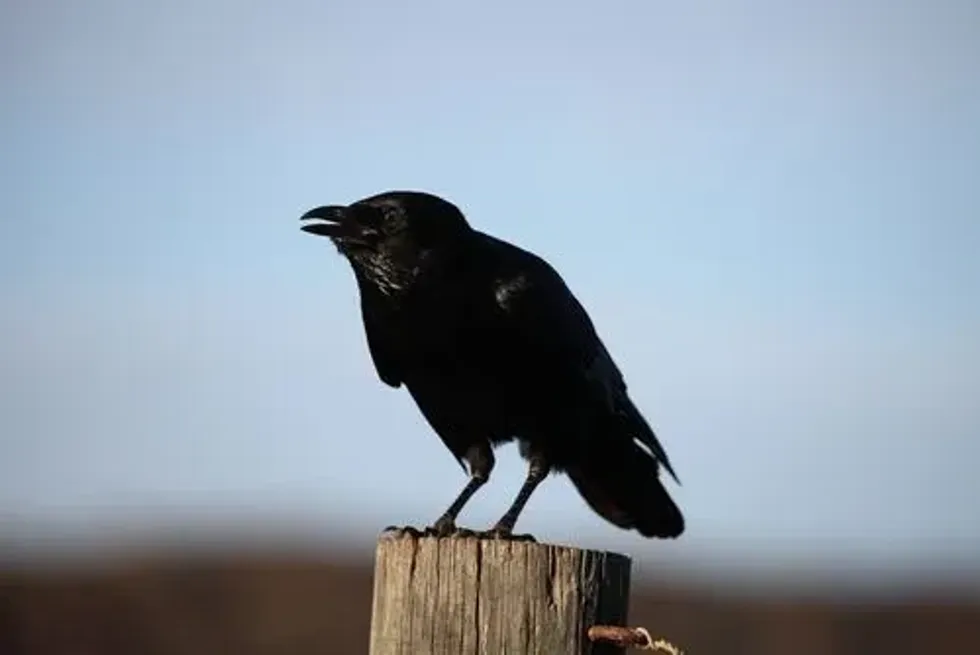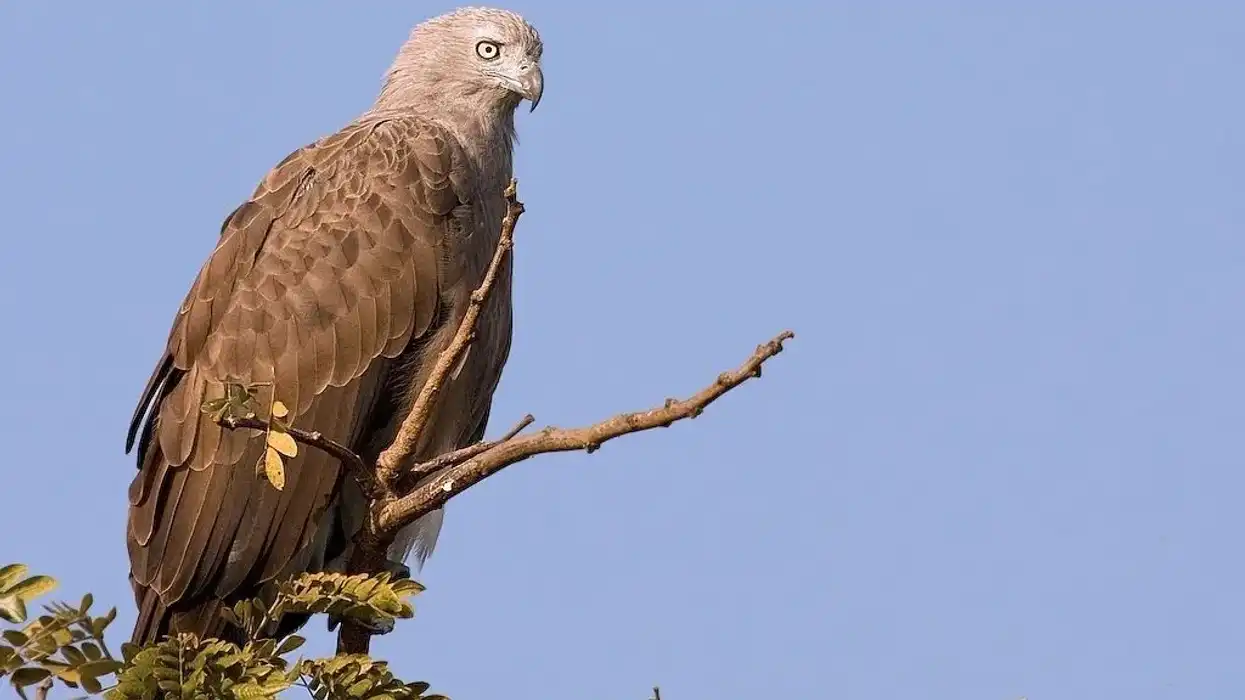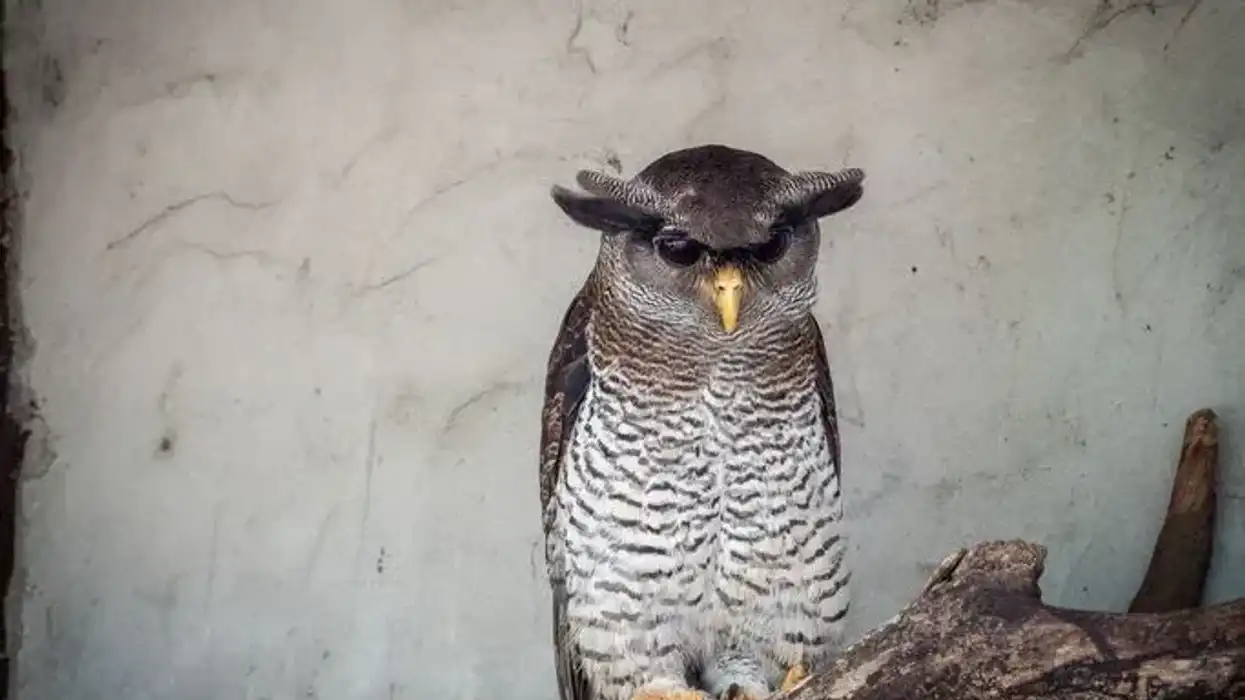A little crow (Corvus bennetti), as the name suggests, is a small member of the crow family. They are named after Kenric Harold Bennett, an ornithologist and a collector of natural history specimens from New South Wales. Little Crow belongs to the order Passeriformes.
This little black crow has white bases on its head and neck feathers. They can be found in or near any dry, arid, or semi-arid region of the continent. Their unique nests are placed above the ground in forks of trees or shrubs.
They also build their nests on artificial structures such as towers or windmills. Beneath the lining of the nest, you can find a layer of mud.
The deep, flat calls of this crow range from a harsh ‘hark-hark’, to a raven-like ‘aarh-aarh’, and have up to 15 notes. These nomadic crow species are monogamous and breed once or twice annually. They are considered pests in agricultural lands and are sometimes shot or poisoned.
To know further about these interesting birds, we have assorted a list of interesting facts about them for you to read. You can also read more articles on the hooded crow and the canyon wren.
Little Crow Interesting Facts
What type of animal is a Little Crow?
Little crows are a type of bird. They are an Australian species of crow.
What class of animal does a Little Crow belong to?
Little crows are birds, and therefore they belong to the class of Aves.
How many Little Crows are there in the world?
They are an abundant and widespread species of crow with unknown population size.
Where does a Little Crow live?
Little crows are endemic to Australia. They can be found in the dry, near-desert areas of the western and central parts of Australia. They are also known to visit the cultivated lands in small country towns. The little crow usually prefers small, loose colonies for nesting.
What is a Little Crow's habitat?
Little crows prefer the terrestrial habitats of arid and semi-arid zones. They are commonly found in country towns, pastoral lands, open woodlands, and shrublands where eucalyptuses and acacias are abundant.
Who do Little Crows live with?
Little crows are usually solitary. They can be seen in pairs during the breeding season. After the breeding season is over, they are known to migrate as far as up to 435 miles to the southwest of the Australian continent in flocks of 50-300.
How long does a Little Crow live?
Little crows have a lifespan of 14-20 years in general.
How do they reproduce?
They breed only in areas near a river or a lake, with the availability of surface water. In the southern part of the continent, the breeding season of this crow species falls between late winter and spring.
They are monogamous and nest in small, loose colonies. Their large bowl-shaped nests are made mainly of sticks and are lined with tree bark, feathers, grass, hair, wool, and other pieces of cloth.
A layer of mud is often seen beneath the lining. On average four to six eggs are laid. The incubation is done by the female crow, and it lasts for 16-18 days.
The newly-born chicks are fed by both parents. The nestling period lasts for 29-31 days, after which the family, including the fledglings, migrate in flocks.
What is their conservation status?
According to the International Union for Conservation of Nature (IUCN), this species of crow is listed as of Least Concern.
Little Crow Fun Facts
What do Little Crows look like?

Little crows are small, slender crows with short black legs and a small black bill. Their heads and tails are relatively larger than the rest of their body. Though almost entirely glossy black, they have white feather bases on their head and neck.
A male and female little crow look very similar. Young ones have a duller plumage. The eyes are white in adults while they are blue-gray in fledglings and hazel in newborns.
How cute are they?
While they may not be colorful or a treat to the eyes, with their small size and glossy black plumage, just like their name, little crow, sounds, these little birds are cute.
How do they communicate?
They make little gurgling croaks. Their calls are short, sharp, and nasal. It is monotonous without much variation. They have low-pitched calls with long notes.
How big is a Little Crow?
The weight of a little crow bird can range between 9.9-18.5 oz (282-525 g). It varies with age and gender. They can be as long as 17.7-18.8 in (45-48 cm). A little crow is only three-quarters the size of a common raven (26 in).
How fast can a Little Crow fly?
A little crow is agile in flight. However, their exact flying speed has not yet been estimated.
How much does a Little Crow weigh?
A little crow can weigh between 9.9-18.5 oz (282-525 g). An average male little crow weighs between 12.2-17.6 oz (345-500 g), while an average female weighs between 10.2-17.3 oz (290-490 g).
What are the male and female names of the species?
There are no distinct names for male and female little crows. A bird of this species, whether male or female, is commonly known as a little crow (Corvus bennetti). Interestingly, a group or family of crows is called a ‘murder’.
What would you call a baby Little Crow?
A baby little crow can be referred to as a chick, nestling, or fledgling.
What do they eat?
They are omnivores that predominantly feed on insects, invertebrates, eggs, nestlings, small birds, lizards, or even frogs and small mammals. They also consume fruits, seeds, cereals, and nectar. They are opportunistic predators.
Are they dangerous?
No, the little crow is not a dangerous species. Even though these crow species are considered pests, they do not harm human beings unless in self-defense.
Would they make a good pet?
No, they would not make a good pet. Since they are wild and migratory birds, it is illegal to keep them as pets.
In the US, a special permit is required to keep a pet crow. They are intelligent beings and can be attracted to your garden or backyard even though you can't keep them. They should not be caged and should be released to the wild if captured.
Did you know...
A little crow can be confused with other species of crows and ravens on the continent like the Australian raven, little raven, forest raven, and the Torresian crow. The little crow is the smallest of them all with a thinner and more gangly appearance.
When perched, they hold their body almost horizontally, with raised wings and depressed tails. Their calls are shorter and sharper with a lower pitch.
What is a Little Crow's personality?
Members of this crow family are intelligent. They are among the most intelligent of all the birds in the world.
As much as being intelligent, these family members are also aggressive. They quarrel a lot and are playful at times as well. Studies conducted on them have concluded that they have excellent puzzle-solving ability, a good memory, are quick learners, and can count to four.
What do crows symbolize?
Crows symbolize transformation and represent emotional and spiritual changes. They have a sharp, powerful foresight which is believed to possess the ability to transform adversities into useful things.
Native Americans believe that a crow is a cleanser of land and mind. Most people consider a crow as a bad omen, while Native Americans see them as a symbol of good fortune. Due to their intelligence, seeing crows in your dreams is also believed to be a sign of wisdom.
Here at Kidadl, we have carefully created lots of interesting family-friendly animal facts for everyone to discover! Learn more about some other birds, including the bowerbird and the oak titmouse.
You can even occupy yourself at home by drawing one of our little crow coloring pages.










